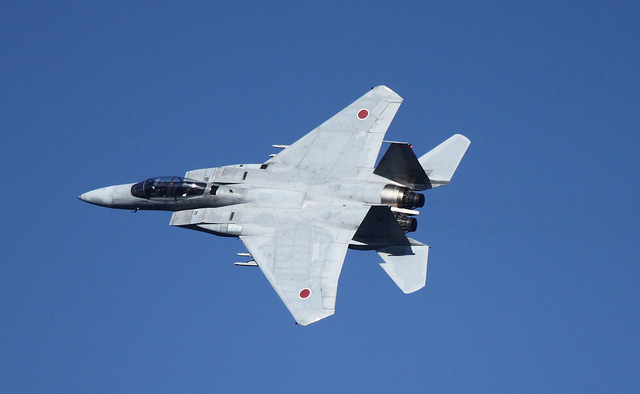Over the past few months, speculation about possible Japanese patrols in the South China Sea has attracted media attention. The United States’ 7th Fleet Commander welcomed such patrol by the Japan Maritime Self-Defense Force (JMSDF), while Japan’s defense minister and top uniform officer responded cautiously but positively.
Japan renounced all of its claims in the South China Sea under the 1951 San Francisco Peace Treaty and takes no sides on territorial disputes among claimant states. However, Japan has a strong stake in the South China Sea as the disputed waters are part of Japan’s critical sea lines of communication. Japan has been engaged in the South China Sea issues primary through capacity building for claimants such as the Philippines and Vietnam so that they can maintain good order at sea. It will, however, take years before the capacity building programs make a difference.
There are urgent needs for JMSDF to join the U.S. Navy for aerial patrol in the South China Sea. Due to budgetary constraints, South China Sea patrols are a huge burden for the U.S. Navy, and Chinese maritime activities there, including the artificial islands construction, are increasingly intensive. The JMSDF can contribute a lot to enhanced maritime domain awareness (MDA) in the South China Sea.
China’s land reclamation makes little military sense unless China also reclaims the Scarborough Shoal, which China took from the Philippines in 2012. The seven artificial Islands on the Spratly Islands and the Woody Island in the Parcel Islands do not, by themselves, give China sufficient operational coverage over the entire Nine-Dash Line claim. Enhanced MDA among claimants is essential to prevent China from reclaiming the Scarborough Shoal, which lies near the Philippines’ Subic Bay.
Japan also has an interest in freedom of navigation in the South China Sea. China’s land reclamation in the Spratly Islands has little legal ground, and artificial islands should not produce 12 nautical miles territorial waters. The United States has not decided to conduct its operational assertions inside Chinese-claimed territorial waters under the Freedom of Navigation Program, but Japan should encourage Washington to do so by expressing its will to jointly conduct operational assertions.
China’s ongoing strategic nuclear submarine (SSBN) program in the South China Sea is another reason. Pentagon’s annual report on Chinese military power expects China’s Jin-class SSBNs will start their patrol with longer range ballistic missile JL-2 shortly. China’s new SSBNs will not change strategic landscape immediately, but Japan needs to join US strategic anti-submarine warfare (ASW) operations to maintain the credibility of U.S. extended deterrence.
Despite those urgent needs and its sophisticated surveillance capability, it is unlikely that JMSDF will start regular patrols in the South China Sea due to lack of capacity. JMSDF P-3Cs based in Naha are very busy with the patrol in the East China Sea, where Chinese ships challenge Japanese sovereignty over the Senkaku Islands and Chinese oil companies build gas platforms, possibly with military installations. JMSDF also dispatches two P-3Cs to the Gulf of Aden for counter-piracy patrols every six months.
In the short term, JMSDF is able to conduct occasional patrols, when P-3Cs rotate between Japan and the Gulf of Aden or when it conducts combined training and exercises with the Philippine Navy and U.S. Navy. Additionally, Japan is able to assume the U.S. Navy’s patrol missions in the East China Sea and share intelligence under the new U.S.-Japan Defense Cooperation Guidelines so that the U.S. Navy can concentrate its patrol in the South China Sea.
In the longer term, the JMSDF will have enhanced surveillance capabilities as it currently plans to replace 80 P-3Cs with 70 P-1s indigenous next generation patrol aircraft. But to conduct regular patrol in the South China Sea, the JMSDF needs to procure additional P-1s. The JMSDF also needs to obtain access to support or emergency facilities in the South China Sea. Accordingly, the JMSDF may seek a visiting forces agreement with the Philippines. In addition, the Japanese government can use its official development assistance strategically to invest into commercial airport infrastructure construction along the South China Sea.
